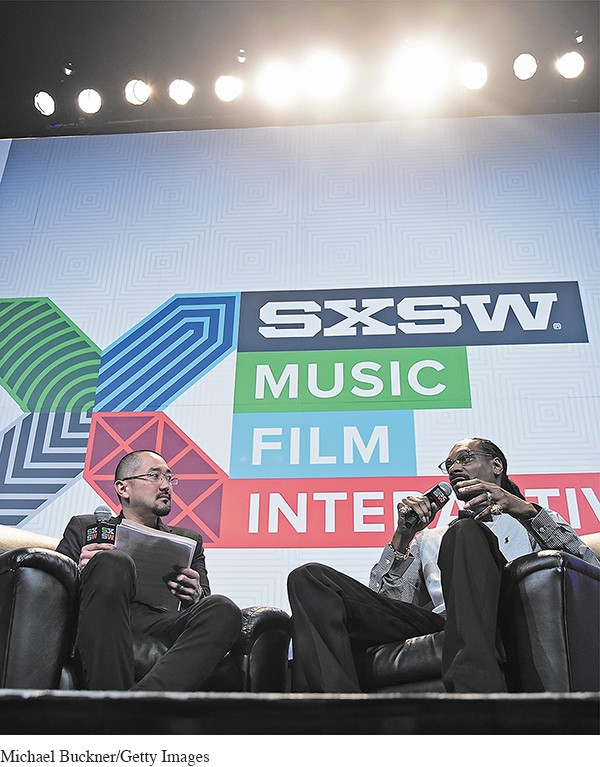1.1 Chapter Introduction
1
Introduction to Communication
H is goal was simple: create a fun forum for talking about bands with other music enthusiasts.1 As he describes, “I originally decided to host the festival so I could connect and hang with club owners and music lovers I knew in Kansas City and New Orleans.” But little did newspaper editor Louis Black know that his brainchild—
1 All content in the opener adapted from Dream Share Project (2011) and http:/
Each spring, SXSW draws tens of thousands of musicians, filmmakers, tech designers, and spectators to Austin, Texas. More than 2,500 artists perform, and they are as talented as they are diverse: rapper A$AP Ferg, electronic duo Crystal Castles, and Americana rock bands like The Strumbellas and The Avett Brothers. Dozens of films are debuted. Hundreds of games and apps are demoed. SXSW has even become a key way to break into various media industries. Miguel, Alabama Shakes, and Foster the People all received Grammy nominations after appearing at the festival. Movies debuting at SXSW include Fast and Furious 7, Ex Machina, and Bridesmaids. Even Twitter first gained national (and international) popularity following heavy publicity at SXSW.
At the heart of SXSW, however, is communication. Festival organizers use social media such as Twitter, Instagram, Facebook, and Vimeo to coordinate and conduct the festival. Amid the various musical performances and film screenings, SXSW participants interact face-
Despite its size, impact, and global reach, SXSW remains dedicated to Louis Black’s original intent: connecting people through communication. As he describes, “We’ve struggled hard to maintain the integrity of the event. . . . What we love most is the creative community that comes out of the event. SXSW may be huge, but it’s fundamentally about people who love music and film and new media; and most importantly people who love to talk about it all with each other.”

Communication connects us to one another. Whether you’re attending a festival like SXSW or spending a normal day at school, work, or home, you interact with people one-
Across all of these types and instances of communication, two things are important to keep in mind. First, the communication choices you make are connected to the outcomes that follow. When you communicate well, you increase the likelihood of desirable outcomes, such as successful group projects; compelling presentations; and satisfying, healthy relationships. When you communicate poorly, you are more likely to generate negative outcomes, such as group dissatisfaction, confused audience members, and relationship turmoil.
Second, different types of communication are connected to each other in fundamental ways. Sure, texting a close friend is different from sending an e-
 LearningCurve can help you review! Go to macmillanhighered.com/
LearningCurve can help you review! Go to macmillanhighered.com/
choicesconnections2e
This book will help you build your communication skills by deepening your understanding of communication choices and their connections. In this chapter, you’ll learn:
What communication is and how the communication process works
The goals that communication helps you achieve
How the study of communication developed
The characteristics of communication competence
The choices and connections underlying your communication